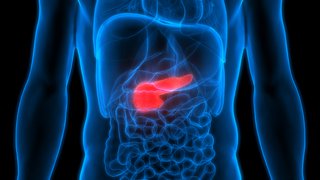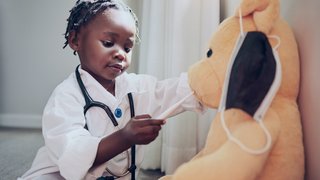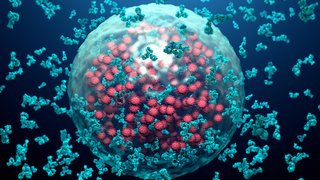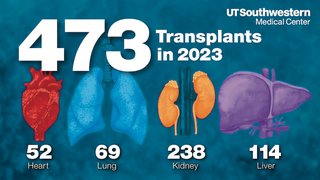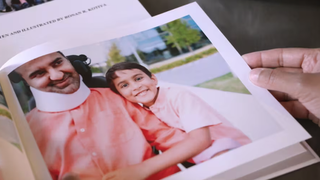Complex liver transplant gives Frisco man new lease on life
March 9, 2019

Juan Cueto did not feel sick, but he was losing weight rapidly and was devastated with the knowledge that he had two life threatening diseases, cancer and a liver disease.
Doctors in another state told him there was no treatment; only a liver transplant would cure him of the primary sclerosing cholangitis he was diagnosed with in 2012. He was told this liver disease could lead to bile duct cancer – and it did.
“It was very frustrating. I felt like, ‘How long do I have?’ You start thinking about your kids, your future. Your life is going down,” said Mr. Cueto, a 46-year-old electrical engineer who lives in Frisco.
Mr. Cueto’s prospects changed dramatically when he moved to Texas in 2016 and found a team of specialists at UT Southwestern who could address both issues in one surgery.
Dr. Parsia Vagefi brought the new surgical protocol for bile duct cancer and liver disease when he came to UT Southwestern in 2018 as Associate Professor of Surgery and the Ernest Poulos, M.D. Distinguished Chair in Surgery.
'Sometimes Hail Marys work'
The surgery protocol would give Mr. Cueto a new liver by transplant and surgically remove the bile duct. Of the 7,000 liver transplants that take place nationwide every year, only 1 percent address bile duct cancer in the same surgery.
Dr. Vagefi told Mr. Cueto, “It’s a little bit of a Hail Mary pass, but sometimes Hail Marys work.”
UT Southwestern had the expertise, but Mr. Cueto had to wait for a liver to become available. A man he knew suffered from a similar condition, and he was alarmed to see his health decline rapidly. The man was near death when he received a partial liver transplant from a living donor.

“That really scared me, too,” said Mr. Cueto who has a teenage son and a daughter in college.
To be eligible for transplant, doctors would need to ensure that cancer had not spread anywhere else in his body. Oncologists from the Harold C. Simmons Comprehensive Cancer Center put Mr. Cueto on a carefully planned treatment plan of radiation and chemotherapy.
His medical oncologist, Dr. Muhammad Beg, said the careful monitoring that comes with every patient plan was particularly important for Mr. Cueto with scans receiving extra scrutiny.
“We monitor patients very closely with scans. Patients need to fit very specific criteria before they are considered for transplant. Part of this process is a detailed discussion of their scans in a multidisciplinary tumor board,” said Dr. Beg who is an Associate Professor of Internal Medicine and Dedman Family Scholar in Clinical Care. “We also ensure that chemotherapy and radiation is given following strict criteria and proven protocols.”
Dr. Vagefi said many patients in this situation nationwide do not make it to transplant because their cancer spreads. After imaging in Radiology, UT Southwestern doctors did an endoscopy to ensure cancer had not reached Mr. Cueto’s lymph nodes.
“There were a lot of people involved getting him to transplant,” Dr. Vagefi said. “It was a true multidisciplinary effort.”
In July, Mr. Cueto got the call. A liver had become available.
“I was super scared,” he said. “You have to be strong and hope for the best.”
Of the 7,000 liver transplants that take place nationwide every year, only 1 percent address bile duct cancer in the same surgery.
Dr. Vagefi said the first phase of the surgery focused on making sure cancer had not spread elsewhere in Mr. Cueto’s body. Any sign of spread would halt the operation, he would not get a new liver, and he would be back to square one.
“We inspected the entire abdomen to make sure there is no evidence of microscopic spread, and we sampled certain lymph nodes that surround the liver,” Dr. Vagefi said. “We sent those to the Department of Pathology, another area of expertise that we have at UT Southwestern that helped contribute to this team effort. They look at those slides right away and they can tell us whether there is spread of the cancer or not. If there’s spread then we abort the case.”
Another potential recipient was ready, per the protocol’s requirement, to receive the liver if Mr. Cueto’s case was aborted. But one after another, the results came back. No cancer had spread. Dr. Vagefi moved on to the transplant and surgical removal of the bile duct.
“We cut out the recipient’s bile duct in its entirety. We didn’t want to leave any of that behind for the chance of harboring cancer or developing cancer in the future,” he said. “But we still needed a way to drain the donor liver bile duct so we had to reroute the bowl and connect it to the donor bile duct and allow it to drain. That added another level of complexity to the case.”
Two life-threatening conditions, one surgery
Juan Cueto didn't have many symptoms, but he was losing weight rapidly and was devastated with the knowledge that he had two life-threatening diseases, cancer and a liver disease. The collaboration between the multidisciplinary transplant and cancer teams at UT Southwestern saved his life.
'It was like my second birthday'
Dr. Vagefi said he found radiation oncologists had worked with tremendous precision; radiation treatments were tightly focused in a specific area. This meant that blood vessels were not radiated any more than necessary, leaving an ample amount of blood vessels for reconnection. No bypasses were needed. Veins, an artery, the new bile duct were delicately sutured in the surgery’s final steps.
Hours later Mr. Cueto woke up in the recovery room, and Dr. Vagefi came to his bedside. He was too groggy to remember Dr. Vagefi’s exact words, but he remembers him saying everything went well. He would have no restrictions going forward.
“I was so happy. It was like my second birthday,” Mr. Cueto said. “I feel like I was in the right place at the right time. It was a very professional team, very well organized.”
Blood tests and follow up appointments show Mr. Cueto enjoying a strong recovery. He looks forward to having his 21-year-old daughter home for the holidays and has begun building a vintage video game replica in the garage with his 15-year-old son.
“I feel great,” he said. “I felt like somebody was looking out for me, and they were making the best decisions for me. I didn’t have any doubt that I was in the right place at the right time.”


